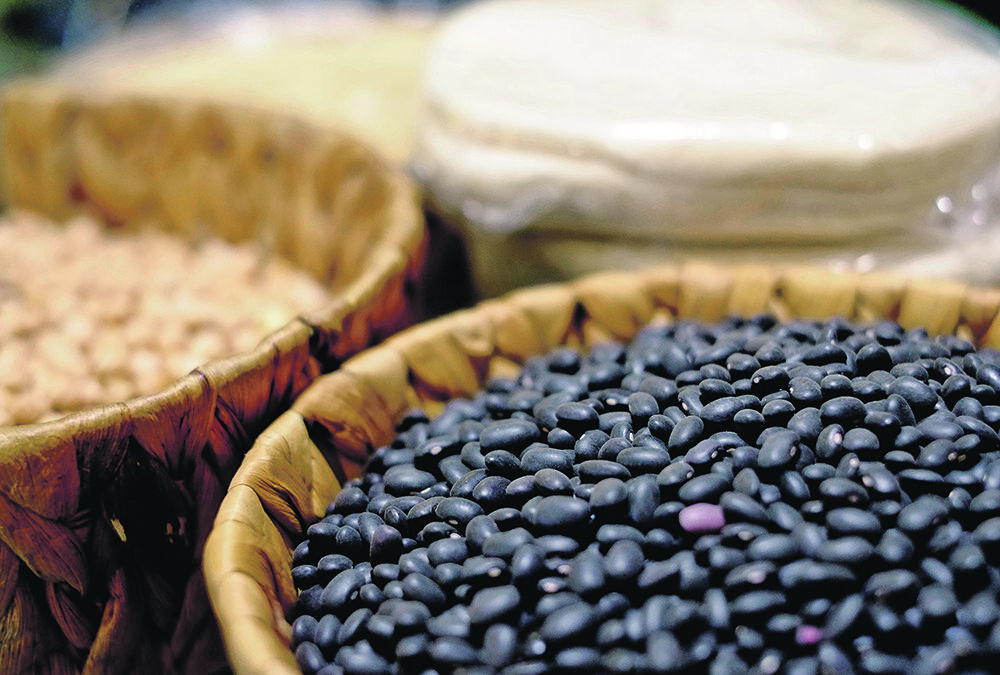“We are in a painful situation around here,” Lucas Genera, a trader with Agrofin, said during the Global Pulse Confederation’s (GPC’s) Argentina Pulses Update webinar.
“It is the worst crop since the drought of 2013.”
He is forecasting the country will export 167,000 tonnes of beans, down from the previous four-year average of 383,000 tonnes.
Poor rainfall and high temperatures capped yields early in the year, but it was two severe frost events in mid-May that caused enormous damage to yield and quality.
Argentina is a major player in the alubia (white) and black bean markets.
Alubia shipments will likely fall to 35,000 tonnes from a typical program of about 155,000 tonnes
“When you see the numbers, it’s like we’re seeing a horror movie,” said Genero.
Black bean production was not as heavily impacted by the poor weather due to geographic distribution of the crop. Exports are forecast at 105,000 tonnes, down from the usual 150,000 tonnes.
Argentina is also a player in cranberry, dark red kidney and light red kidney bean markets. Exports of all those classes will be down significantly.
“We can basically say that we are under an emergency,” said Ivan Martin, a trader with Alimar.
The quality of the beans that were harvested is poor, with plenty of yellowing and poor soaking characteristics, which is a problem for canners, he said.
Surprisingly, growers managed to achieve some good sizes.
Genero said the economic impact for the country’s bean growers is worse than it was during the 2013 drought because growers gave up on that crop in early April, but they kept applying inputs to this crop through May.
To make matters worse, ocean freight rates have tripled in key markets such as Central America, South America and the Middle East.
Transit time has also increased due to port problems in Brazil and Mexico, which handle a lot of Argentina’s transshipments.
It is taking over 100 days to move product to markets in the Middle East, up from 30 to 50 days in the past, while shipments to Central America are taking double the normal 25 to 30 days.
“It’s another ingredient to put in the soup,” said Genero.
Argentina’s customers may be looking to North America to help pick up the slack.
Farmers in the United States planted 1.53 million acres of beans, a 30 per cent increase over last year, according to the August estimate by the USDA’s National Agricultural Statistics Service.
That is well above the initial June estimate of 1.32 million acres, an 11.5 per cent increase.
U.S. production is pegged at 1.39 million tonnes, a 28 per cent improvement over last year.
Canada’s production is expected to be up as well. Stat Publishing is forecasting 388,422 tonnes, a 44 per cent increase over last year.
Mexico has had three straight crop failures due to poor rainfall during the spring/summer crop season, which runs from July through December.
Orion Roy-Wright, a trader with ADM Edible Beans, told GPC in May that some analysts were forecasting a further contraction of Mexican bean acres in 2024 due to a lack of financing, poor seed availability and another drought year.
Mexico was an active buyer of black and pinto beans in 2023-24 and that is not expected to change in the upcoming year.
The country consumes about 750,000 tonnes of beans annually. The split is 320,000 tonnes of black beans, 300,000 tonnes of pintos, 75,000 tonnes of yellow beans with the remainder being other varieties.
Fuente: https://www.producer.com/news/harvest-trouble-spells-disaster-for-argentine-bean-sales/

